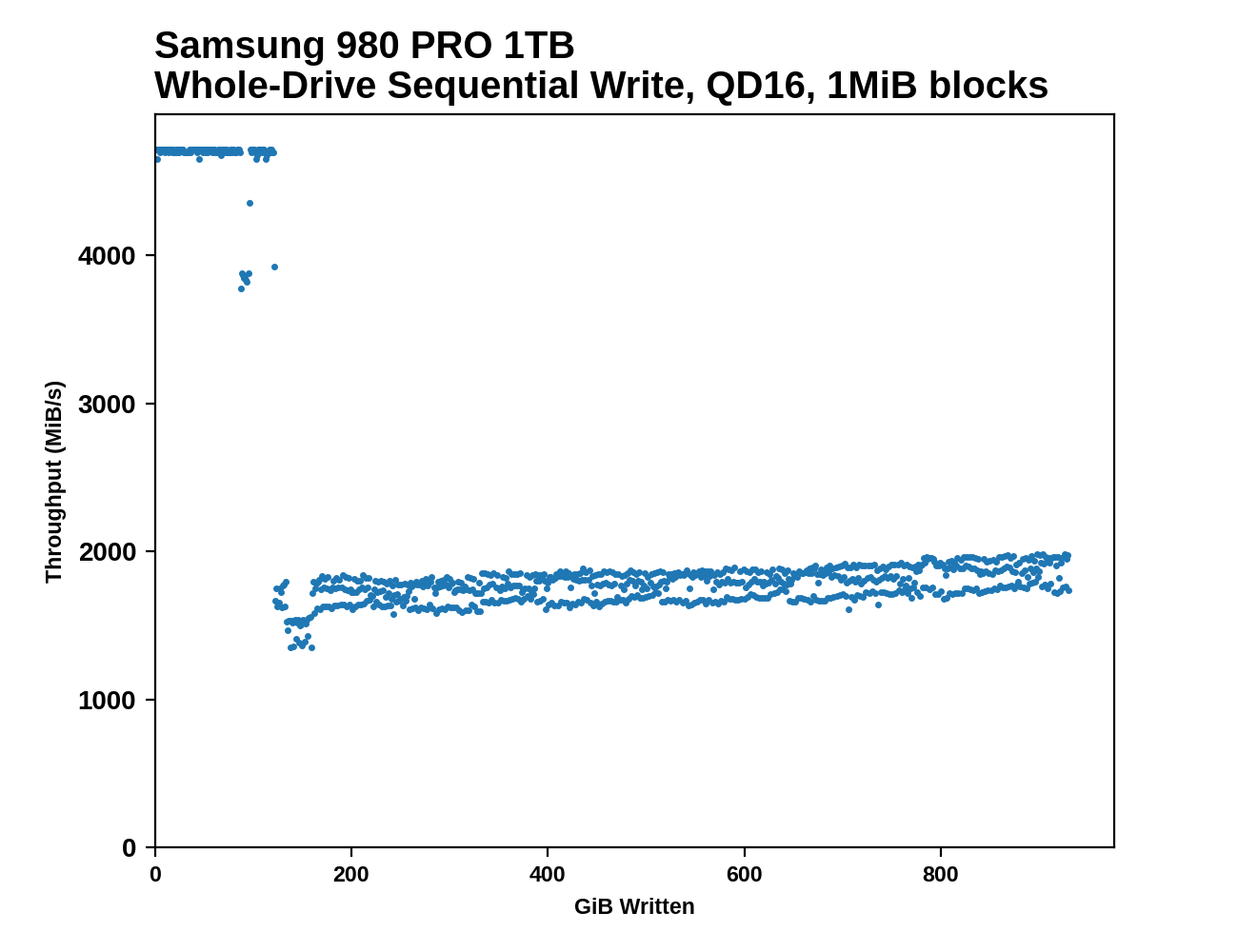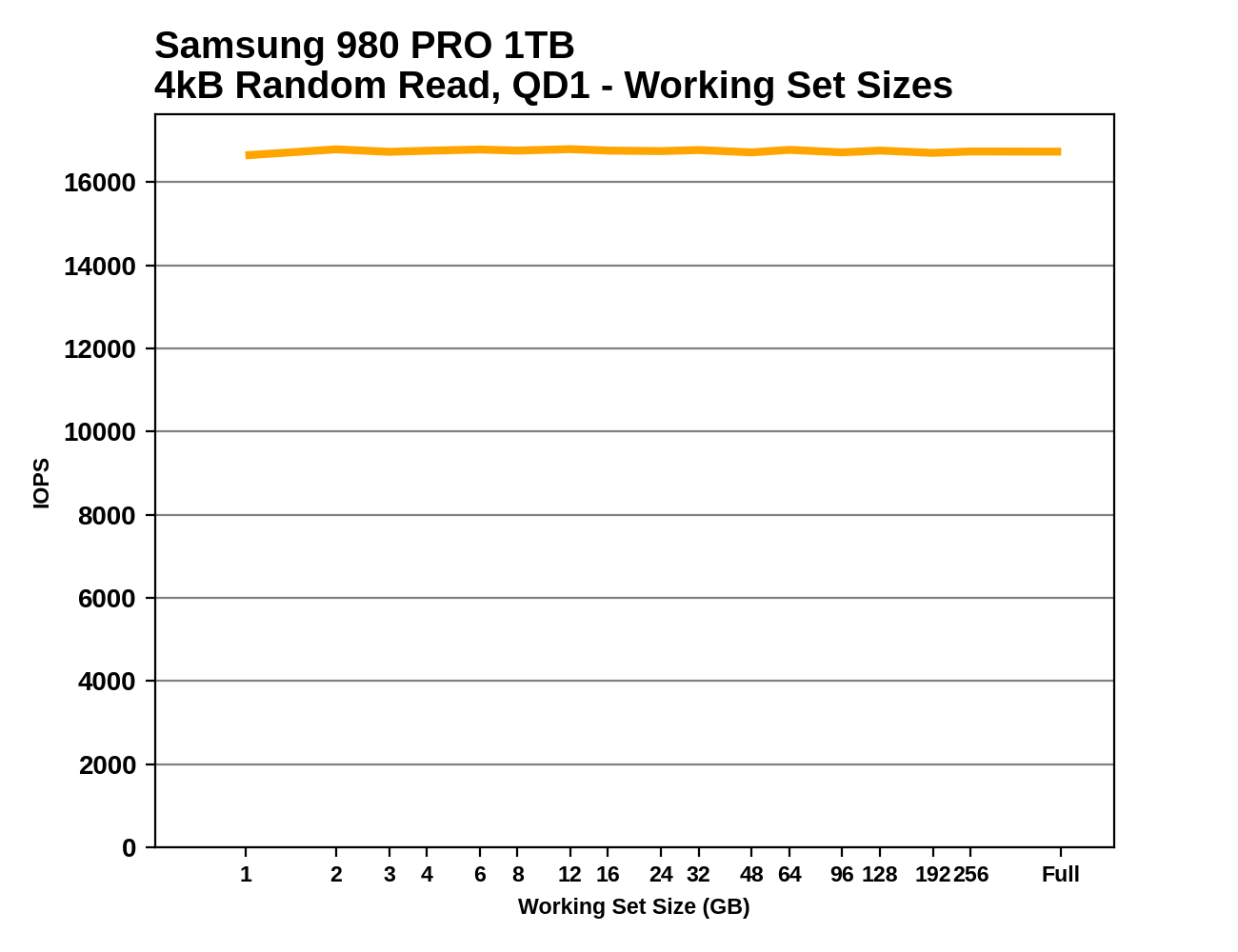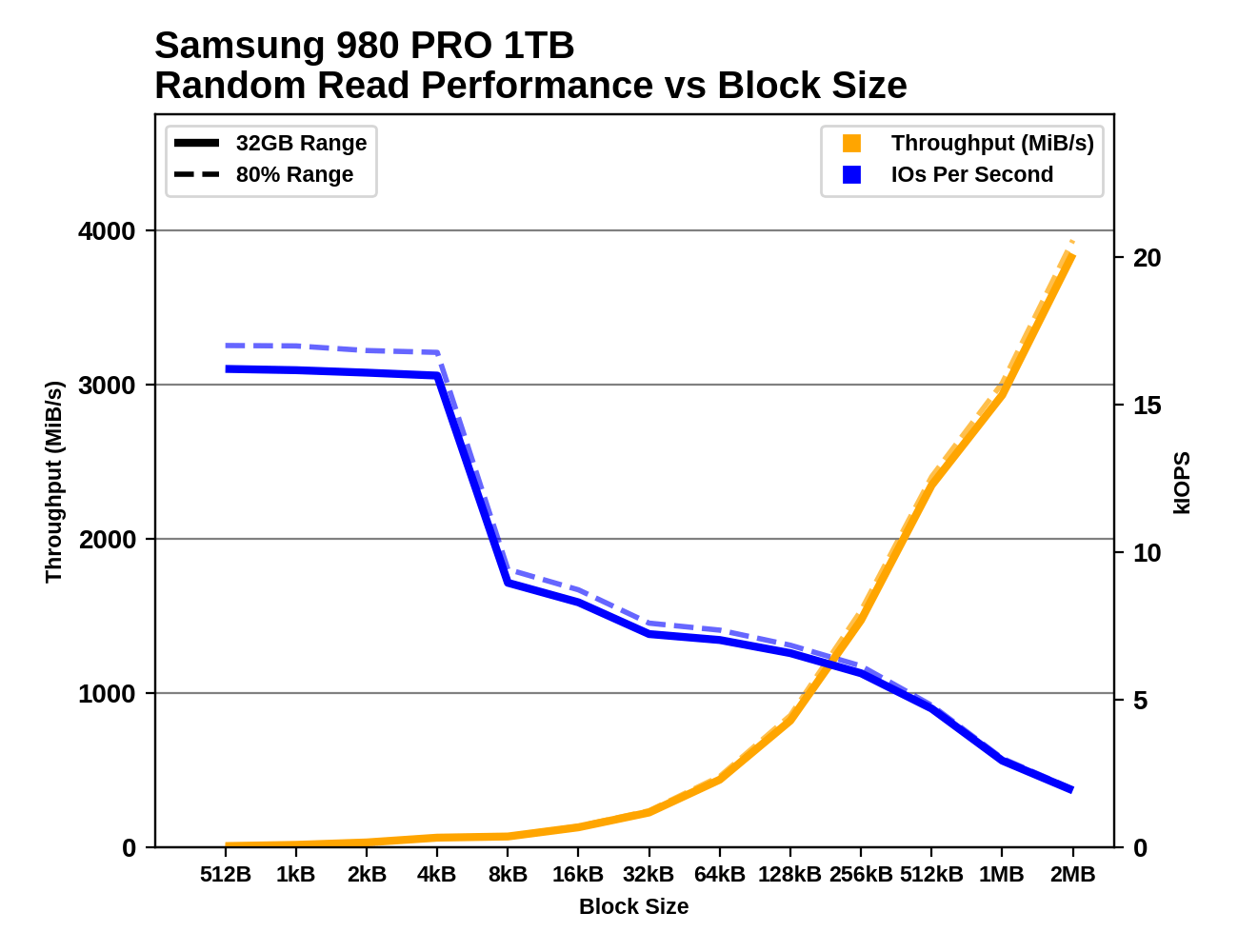How We Test PCIe 4.0 Storage: The AnandTech 2021 SSD Benchmark Suite
by Billy Tallis on February 1, 2021 1:15 PM ESTAdvanced Synthetic Tests
Our benchmark suite includes a variety of tests that are less about replicating any real-world IO patterns, and more about exposing the inner workings of a drive with narrowly-focused tests. Many of these tests will show exaggerated differences between drives, and for the most part that should not be taken as a sign that one drive will be drastically faster for real-world usage. These tests are about satisfying curiosity, and are not good measures of overall drive performance.
Sequential Drive Fill
The main purpose of the sequential drive fill tests are to estimate the size of a drive's SLC write cache. This test is also one of the most likely to trigger thermal throttling, because it is the longest-running sustained IO test in our suite. This test performs two passes of writing to the drive. The first is conducted after erasing the drive and giving it a few minutes to cool down and finish any background work. This first pass of sequential writes shows us the best-case SLC cache capacity, since any variable-sized cache will be at its largest when starting on an empty drive. The second pass is conducted after giving the drive some idle time and performing some read performance tests. By the time the second write pass begins, the drive should have finished any background work and we should observe the worst-case SLC cache capacity for drives that have a variable size cache.
As the second sequential write pass continues, the SLC cache will eventually be filled and even drives that don't use SLC caching will usually show some performance drop. This is pushing the drive well beyond the limits of any real-world consumer workload, so aside from any SLC cache at the beginning, performance during the second pass is irrelevant. However, since this second pass is overwriting data that was also written sequentially, the drive's garbage collection during this process is quite straightforward. Overwriting the drive with random writes instead of sequential writes would be more likely to fill the drive's spare area and induce more severe performance drops.
 |
|||||||||
| Pass 1 | |||||||||
| Pass 2 | |||||||||
 |
|||||||||
| Average Throughput for last 16 GB | Overall Average Throughput | ||||||||
After both passes of sequential writes are complete, the last 20% of the drive is TRIMed and the drive is given plenty of idle time. This prepares the drive for the battery of tests that are conducted on an 80%-full drive—full enough that SLC cache size is significantly reduced, but still leaving some empty space to avoid testing the absolute worst-case scenario of performance on a completely full drive.
Working Set Size
This test performs random 4kB reads at queue depth 1 while varying the working set size: the size of the dataset that the random reads are coming from. When the working set size is small, the access pattern has a high degree of spatial locality, and DRAMless drives should have no trouble caching the limited amount of NAND mapping information needed to handle the reads. As the working set size increases, drives with little or no RAM are likely to show reduced performance from an increasing number of FTL cache misses. Often there is a sharp drop in performance that suggests the size of any on-controller SRAM or HMB cache in use. Drives with some DRAM but not the full 1GB per 1TB ratio may be able to handle very large working set sizes with good performance, but typically still show reduced performance when random reads span the entire drive.
 |
|||||||||
This test also provides an opportunity to verify that the TRIM command is working properly: when attempting to read data from a portion of the drive that is empty (or has been trimmed), the drive should return a bunch of zeros as soon as it has looked up the relevant LBAs in the FTL and determined that there isn't actually any real flash memory currently allocated to those addresses. So in addition to running the working set size test on a full drive, we also run it when the drive is 32GB full and 80% full, expecting to see substantially increased performance when many or most of the reads should be handled without actually touching the NAND flash memory. These extra test runs aren't included in the graphs we publish, but we're keeping an eye out for drives that don't behave as expected.
Performance vs Block Size
Industry standard practice is to measure random IO performance using 4kB operations and sequential IO performance using 128kB operations. But SSDs permit IOs as small as 512 bytes, and real-world workloads include a wide variety of actual IO block sizes. Our trace-based tests subject drives to IOs of various sizes, but are ill-suited for analyzing how specific block sizes perform.
These tests perform 1GB of IO at each block size, at a queue depth of 1 and with the usual idle time after each step. Like our other synthetic tests, they're performed both with the drive 32GB full and 80% full, to capture any differences due to things like SLC caching. Regular readers may recognize these tests as based on ones we use as part of our enterprise SSD test suite. The principle is the same, but the configuration here has been adjusted to match the rest of our synthetic tests, and we're now testing up to block sizes of 2MB. As with some of the other tests, the fact that we're testing under Linux means that IOs larger than 128kB get split up by the OS and issued to the drive as a batch. For example, IO with a 1MB block size ends up looking to the drive like eight operations of 128kB issued at the same time.
 |
|||||||||
| Random Read | |||||||||
| Random Write | |||||||||
| Sequential Read | |||||||||
| Sequential Write | |||||||||
There are several interesting phenomena to keep an eye out for. With block sizes smaller than 4kB, we generally see performance that is roughly the same IOPS as with a 4kB block size. This is a consequence of the fact that virtually all flash-based SSDs manage the NAND flash memory in 4kB chunks, even when configured to expose a 512-byte LBA size. Some drives exhibit pathologically low performance with sub-4kB block sizes, especially for writes, where a read-modify-write cycle may be necessary for the drive to preserve the data in the rest of the 4kB block.
Sequential IO with small to medium block sizes can also reveal some surprises, such as drives that seem to assume any 4kB access will be a random access and choose not to read and cache the rest of the (typically ~16kB) NAND page. Quite a few drives also show little improvement in sequential throughput with the medium block sizes, but show significant throughput scaling once the block size is well past 128kB. This is part of why we changed our burst sequential IO tests to use 1MB block sizes instead of 128kB.










70 Comments
View All Comments
thestryker - Monday, February 1, 2021 - link
The explanations along with all of the data was a great way to show insight into both the why and how for the new bench setup.The only thing I'd like to see is either 900p/905p Optane drives added in and wishful thinking would be p5800x. Even though they're at relatively unattainable prices due to low volume, discontinued and/or being enterprise they do represent nand alternatives with a rather different performance profile. Hopefully Intel will opt to bring another consumer version out once they have broad PCIe 4+ support across their consumer product line.
Billy Tallis - Monday, February 1, 2021 - link
The 900P and 905P are in line for their turn on the testbed. Those two and the WD Black AN1500 will be the first drives I use the new Quarch PAM for, since that currently only has a fixture for the PCIe add-in card form factor. (I did also run some tests on one of the Optane drives while experimenting to develop this suite, but they haven't run through the final version of the full suite.)I do think it's a lot more likely that I'll get a P5800X sample than a Micron X100. But it wouldn't surprise me if Intel holds off on press samples until they're ready for it to be reviewed on an Intel platform.
thestryker - Monday, February 1, 2021 - link
Great to hear, I figured that they just hadn't had their turn yet.I've assumed that Intel + PCIe 4+ drives were all going to be waiting on Intel's own platforms which is why I still hold out hope for a future consumer Optane.
Greg100 - Monday, February 1, 2021 - link
I too would love to see tests of the Intel P5800X and Micron X100 on this new test platform.In fact, these drives interest me most for OS and software installation.
The 900P and 905P are rather a historical curiosity nowadays due to their slow sequential transfer rates.
p1esk - Tuesday, February 2, 2021 - link
AFAIK 905p still destroys any modern drive in random reads/writes. Also, it does not degrade like other drives when their cache is full.Oxford Guy - Tuesday, February 2, 2021 - link
Shame about the ridiculous pricing, though.Intel also refused to validate its 'storage' drives like the 800p, 900p, and 905p for use as a disk cache. This site posted some interesting results for the 118GB 800p. It made it seem like that drive might actually be relevant for people on a tight budget who need a lot of storage and don't mind the noise of a mechanical hard disk. But, Intel's site has very clear statements saying that only the 'memory' Optane products (which seem to be very pointless for consumers) are supported for cache use.
ksec - Monday, February 1, 2021 - link
OH Thank You. Coming here just to comment on P5800X. I am wondering on the power usage the idle time of SSD is so much higher than what I expected.pexxie - Monday, February 1, 2021 - link
Wow, very thorough. Phenomenal work.Would there be any interest in testing synchronized writing? (i.e. bypassing the device's volatile write-back cache). In linux this can be done with the oflags sync or dsync.
E.g. 4K Random Writes: "dd if=/dev/urandom of=/testfile bs=4k count=10k oflag=sync"
Without the oflag, or using oflag=direct; you'd be using the write-back cache, which looks great but comes with reliability risk. See a write-up here: https://www.postgresql.org/docs/current/wal-reliab...
linuxgeex - Tuesday, February 2, 2021 - link
That's not 4K random writes you're testing. It's sequential writing of pseudorandom data generated by the kernel.pexxie - Wednesday, February 3, 2021 - link
I think I get what you're saying/writing. It's random data, but not being written to random locations on the disk. Any clue how to do the latter? Gosh, that's a plot-thickener of note for me. :-P How random is "random"? :-O